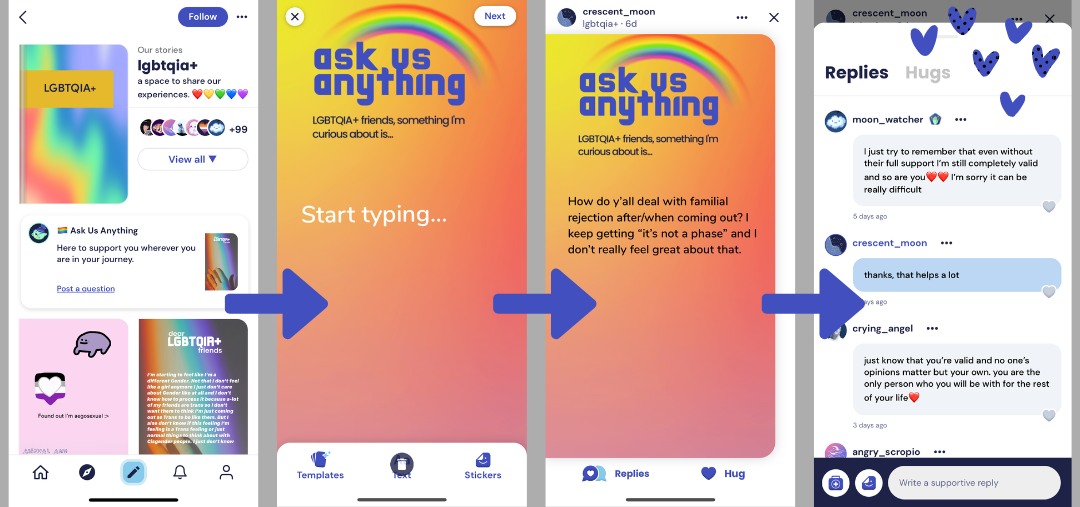How to support someone in crisis in Blue Fever
Unlike traditional social media spaces, Blue Fever’s community thrives on giving and getting support.
How do I support people who are struggling?
If you see a page noting someone’s using self-harm/suicidal ideation to cope, the best thing you can do is make it easy for them to find+connect with the right form of help → a vetted resource.
Here are two quick steps you should take in BF to help someone in crisis:
Send a resource: On any page in Blue Fever, you’ll find a red heart Crisis Resource button. Tap on this button to send a community-approved resource. *If you don’t see this button, it means a resource has already been sent!
Give a supportive reaction: After sending a resource, let them know someone cares (you!) and that their feelings are valid by giving a hug or reply.
IMPORTANT: When trying to make someone feel better, avoid statements that minimize feelings such as:
“Cheer up”
“This too shall pass.”
“Just try harder”
“You’ll snap out of it”
“It could be worse”
We know how hard it is to read that someone’s in pain. While scrolling BF, it’s important to remember that…
You are not responsible for anyone else’s wellbeing or survival.
You are not professionally trained on assessing or implementing crisis intervention. If you are, we’d love to connect! Email info@bluefever.com to learn how to get more involved.
Do not offer to connect with someone 1:1, even if it seems to you that all they really need is someone to talk to. They very likely do (as we know from our own crisis experiences), but the best person they can and should talk to is a professional.
How can I support myself in Blue Fever?
As supporters, two of the biggest skills we can build are…
awareness for our {emotional} limits
setting {+ maintaining} boundaries
Strengthening these skills help us avoid feeling drained when supporting others. Read on to learn how to make the most of your self-care time in BF = self-love more, burn-out less.
Take breaks. Reading about others struggles can help us feel less alone #relieved… but trying to help everyone with everything can get overwhelming, even triggering. Stop-the-scroll often to rest your eyes and mind, and take some deep breaths to reset your nervous system.
Set support boundaries for yourself by noting a few topics you enjoy giving advice on, as well as topics you must steer away from bc #draining #triggering #selfcare. The hardest topics for us to handle can also be the shiny objects we can’t stop looking at. Prepare to avoid them in advance.
Check-in Daily. Don’t ignore your daily self-care reminders (happens to the best of us). Your Mood Calendar is your quick+easy way to track your emotions, practice self-awareness, set intentions for the future and… GROW.
Create Pages. Spill the tea on your mood post-check-in so you can reflect and refer to the people? places? things? most affecting your moods (and start making changes)!
Follow Journals that relate to where you’re at in life (e.g. College), how you’ve been feeling (e.g. Stressed), and what you want to focus on (e.g. Self-Esteem). Your “For Me” feed will start to show pages from others who relate + can support.

